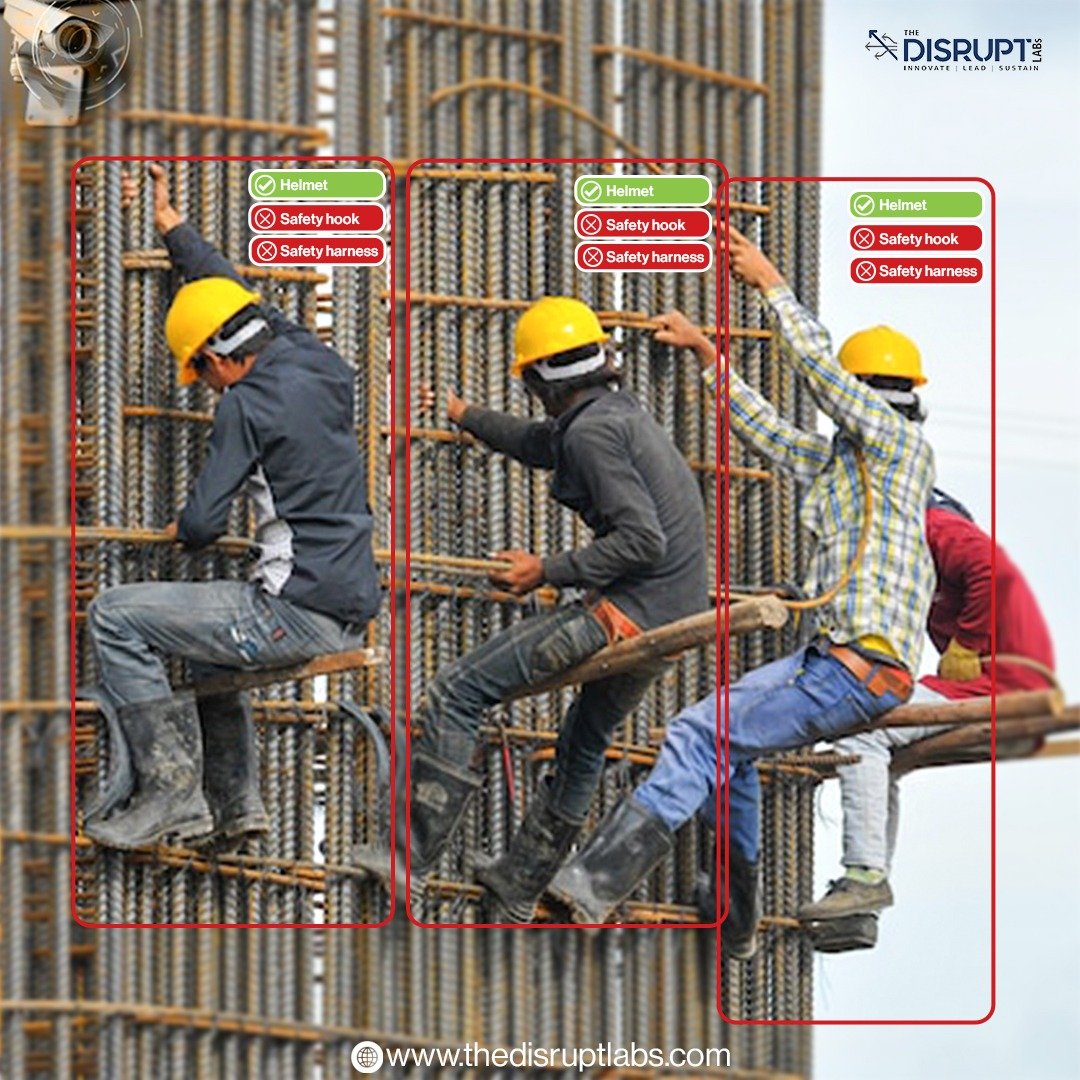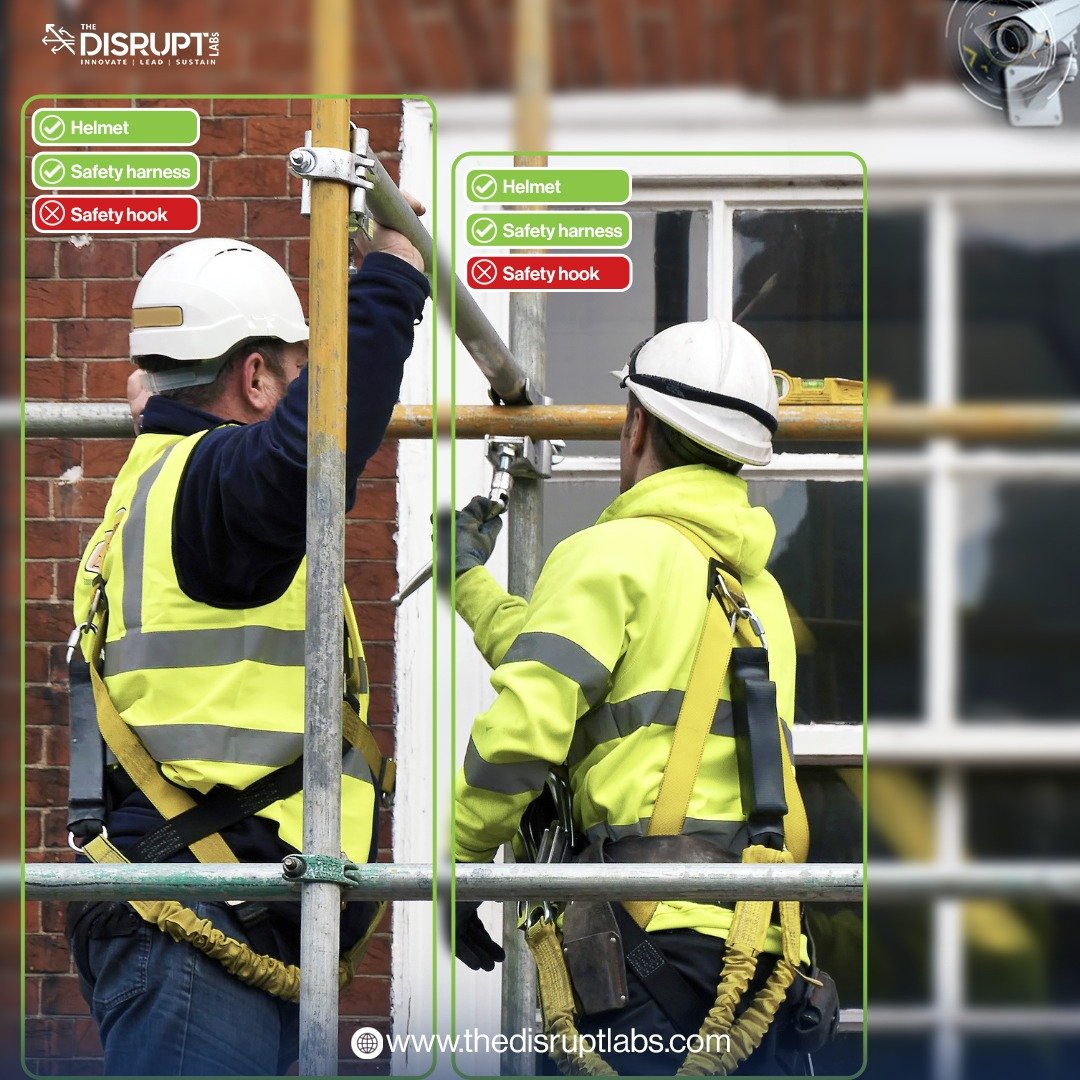Computer Vision AI to Detect Safety Harnesses at Work
Introduction
w
orking at heights poses significant risks and challenges regarding occupational safety and health. Ensuring workers use proper Personal Protective Equipment PPE such as safety harnesses, is critical to preventing occupational injury and complying with OSHA standards. However, ensuring compliance in real time can be difficult. This is where computer vision AI integrated with CCTV can provide an innovative solution, particularly for monitoring the use of safety harnesses on-site. This article explores the importance of safety harnesses, OSHA compliance, and the role of computer vision in ensuring workplace safety.
Understanding the Risks of Working at Heights
Understanding the Risks of Working at Heights
Falls are one of the leading causes of workplace injuries and fatalities. According to the U.S. Bureau of Labor Statistics, in 2022, almost 1 in 5 workplace fatalities occurred in the construction sector, with 38.4 percent of these deaths resulting from falls, slips, and trips. The construction industry was responsible for nearly half, or 47.4 percent, of all fatal incidents involving falls, slips, and trips that year. Understanding the statistics can help underscore the importance of effective safety measures, including the proper use of safety harnesses.
Identifying Potential Fall Hazards
It is essential to identify potential fall hazards in the work environment to mitigate risks. Common hazards include:
- Unprotected edges or openings
- Slippery or uneven surfaces
- Inadequate fall protection systems
- Poorly maintained ladders or scaffolding
Workers should be trained to recognize these hazards and know the appropriate safety protocols to follow. Regular safety audits can help identify and address these risks before they lead to accidents.
OSHA Compliance and Safety Standards
Overview of OSHA Standards for Working at Heights
OSHA has established guidelines that specifically address fall protection in the workplace. These regulations require employers to provide appropriate fall protection systems, such as guardrails, safety nets, or personal fall arrest systems, for employees working at heights of six feet or more in the construction industry.
Employers are also required to ensure that employees are trained in the proper use of these systems, including safety harnesses.
Role of Computer Vision in Enhancing Safety
Computer vision AI utilizes cameras (CCTV) and machine learning algorithms to analyze real-time video footage, identifying whether workers are properly equipped with safety harnesses. This technology is capable of detecting if a harness is being worn incorrectly or if it is not fastened securely. In the high-risk environment of working at heights, such insights are invaluable.
One of the key advantages of using computer vision AI for safety harness detection is the wealth of data it generates. By analyzing this data, organizations can identify patterns related to safety compliance and hazardous behaviors. This insight allows safety officers to implement targeted interventions and preventive measures.
How Computer Vision Works in Real-Time Monitoring
Computer vision technology utilizes advanced algorithms to analyze images and video feeds from cameras placed throughout the worksite. These systems can monitor worker behavior and the surrounding environment in real-time, providing immediate feedback. By staying ahead of technological trends and embracing these advancements, organizations can ensure they provide a safe working environment for their employees.
For example, if a worker is observed not wearing a safety harness while performing a task at height, the system can alert a safety officer or supervisor instantly. This proactive approach helps to address unsafe practices before they result in accidents. This continuous surveillance ensures that all workers remain compliant with OSHA standards and other safety regulations.


Automated Hazard Detection
Traditional safety checks often rely on manual inspections, which can be prone to error or oversight. The implementation of computer vision not only enhances safety compliance but also streamlines reporting and documentation processes. By automatically detecting hazards, these systems can generate reports and statistics that help organizations identify patterns and improve safety protocols.
Benefits of AI-Powered Safety Harness Detection
1. Improved Compliance with Safety Standards
By integrating AI with CCTV systems, companies can ensure compliance with OSHA and other industry safety regulations. Automated monitoring removes the burden of manual checks, streamlining compliance processes and reducing the likelihood of reporting OSHA violations.
2. Enhanced Worker Safety
The primary goal of safety harnesses is to protect workers from falls and other hazards. AI-enhanced detection systems ensure that these harnesses are not just worn but used correctly, significantly improving the overall safety of workers at height.
3. Cost-Efficiency
Automating the monitoring process reduces the need for frequent manual inspections and allows safety officers to focus on other critical tasks. This leads to long-term cost savings, as fewer accidents and violations result in reduced injuries.
Conclusion
As technology continues to advance, the potential for computer vision to enhance safety practices in the workplace will grow. In high-risk industries where working at heights is common, ensuring the correct use of safety harnesses is crucial. With the integration of computer vision AI and CCTV, companies can enhance their occupational safety and health protocols, ensuring that workers are protected in real time. This technology not only improves safety precautions but also automates compliance with OSHA standards, leading to a safer and more efficient workplace.
FAQ's
Safety harnesses protect workers from falls, reduce the risk of injuries, and ensure compliance with safety regulations.
Computer vision can monitor real-time activities, identify unsafe practices, and alert safety officers to potential hazards.
OSHA establishes regulations and guidelines to ensure safe working conditions and reduce workplace injuries.
Hazard recognition is crucial for preventing accidents and ensuring the safety of all workers on-site.

